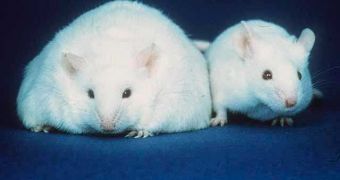Obesity looks like the 21st century plague of mankind, so researchers are continuously conducting studies hoping to find that miraculous weight-loss therapy, and for once, a team of scientists from the Joslin Diabetes Center, found a group of cells in mice, that can be transformed into energy-burning brown fat.
Adults stock white fat cells and in most cases this leads them to weight gain and health problems but in some people, these white cells are supplemented by brown fat cells – a different form of fat that can actually burn energy instead of storing it.
Last year, the same researchers proved that brown fat had an active role in adults, and now they have found progenitor cells in mouse white fat tissue and skeletal muscle, that can be turned into brown fat cells.
Yu-Hua Tseng, PhD – Joslin Investigator and senior author on a paper describing the work, along with her team, conducted in vitro tests of cells in mice found in different fat tissues and skeletal muscle that were marked with a protein called Sca1.
When exposing these cells to the BMP-7 protein – a key element in brown fat development that the Tseng lab had already identified, many presented markers of brown fat cells.
As the investigators added the diabetes drug rosiglitazone to BMP-7, they found that the conversion rates rose for progenitor cells in subcutaneous white fat.
The team also found that the Sca1-positive progenitor cells from several mouse fat depots and muscle tissue, had differed molecular signatures and were more or less receptive to undergoing this transformation.
But when they exposed the isolated precursor cells to BMP-7 in vitro and re-injected them into mice, they found that the cells survived and turned into mature brown fat.
So, all this suggests that if drugs don't turn out well, cell-based brown fat therapies could be possible.
Tseng, who is also Assistant Professor of Medicine at Harvard Medical School, says that “this finding opens up a whole new avenue for researchers interested in designing molecules that induce endogenous progenitor cells to differentiate into mature brown fat cells.
“It's particularly exciting because we found that some of these cells are located in subcutaneous white fat, which could be a very accessible source for them.”
The researcher adds that they “are still looking for the human equivalent of the Sca1 marker for these progenitor cells.
“But we also tested cells isolated from different kinds of human fat, and we found that BMP-7 can induce precursors derived from human white fat to show a marker of differentiated brown fat cells.
“Given that obesity is a major risk factor for type 2 diabetes, cardiovascular disease and other metabolic disease, finding new ways to reduce body weight is really essential,” she says.
“Of course, diet and exercise are still the best approaches for losing weight in the general population, but for people who are genetically predisposed to obesity, or those who already develop detrimental metabolic disorders due to excess body weight, there is an urgent need to develop new interventions for effective and safe weight reduction.
“These results appear to take a significant step toward using brown fat cells in such therapies.”
The paper describing the work was published online in the journal PNAS this week.

 14 DAY TRIAL //
14 DAY TRIAL //